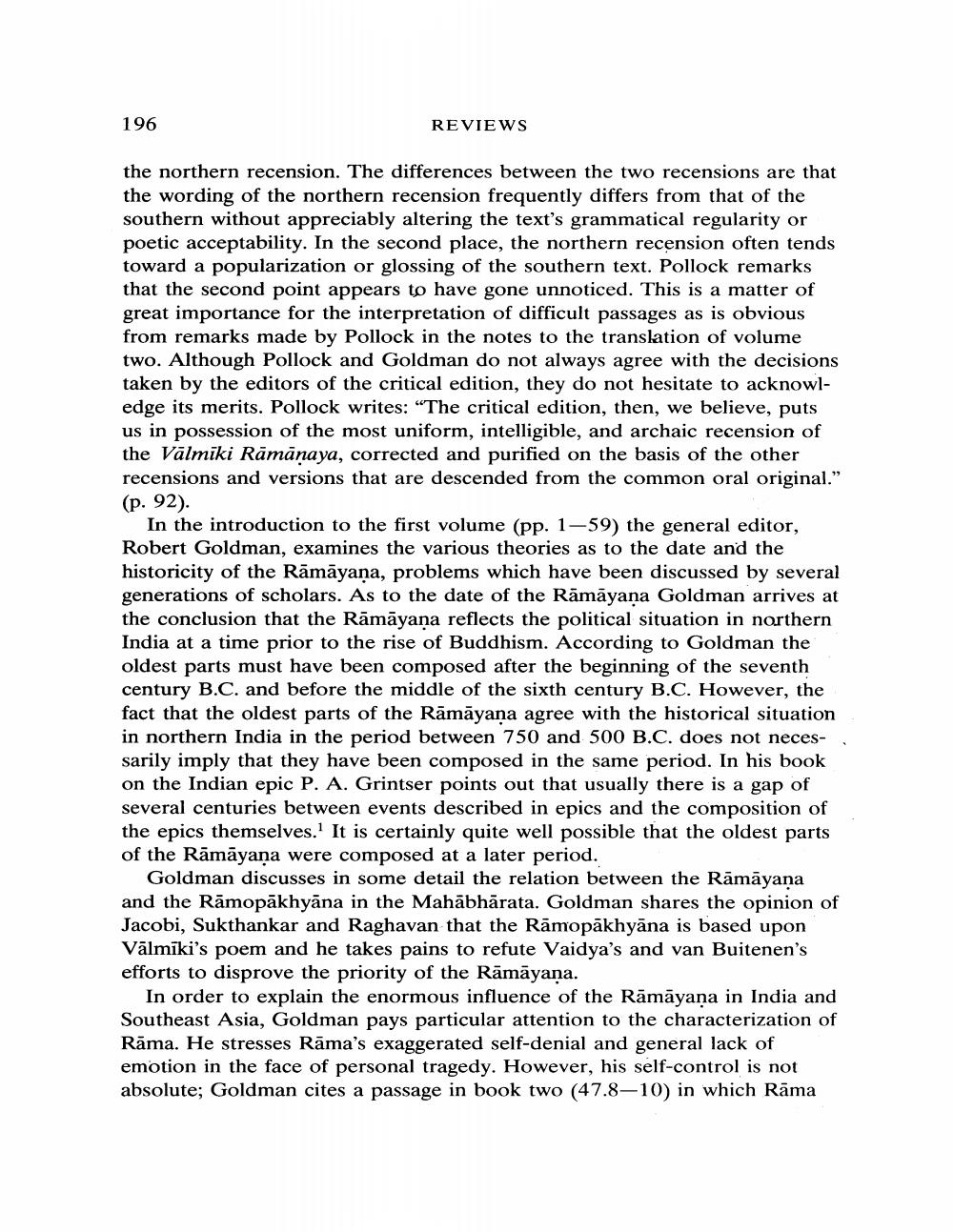Book Title: Reviews Of Diffeent Books Author(s): J W De Jong Publisher: J W De Jong View full book textPage 2
________________ 196 REVIEWS the northern recension. The differences between the two recensions are that the wording of the northern recension frequently differs from that of the southern without appreciably altering the text's grammatical regularity or poetic acceptability. In the second place, the northern recension often tends toward a popularization or glossing of the southern text. Pollock remarks that the second point appears to have gone unnoticed. This is a matter of great importance for the interpretation of difficult passages as is obvious from remarks made by Pollock in the notes to the translation of volume two. Although Pollock and Goldman do not always agree with the decisions taken by the editors of the critical edition, they do not hesitate to acknowledge its merits. Pollock writes: "The critical edition, then, we believe, puts us in possession of the most uniform, intelligible, and archaic recension of the Valmiki Rämäṇaya, corrected and purified on the basis of the other recensions and versions that are descended from the common oral original." (p. 92). In the introduction to the first volume (pp. 1-59) the general editor, Robert Goldman, examines the various theories as to the date and the historicity of the Rāmāyaṇa, problems which have been discussed by several generations of scholars. As to the date of the Rāmāyaṇa Goldman arrives at the conclusion that the Rāmāyaṇa reflects the political situation in northern India at a time prior to the rise of Buddhism. According to Goldman the oldest parts must have been composed after the beginning of the seventh century B.C. and before the middle of the sixth century B.C. However, the fact that the oldest parts of the Rāmāyaṇa agree with the historical situation in northern India in the period between 750 and 500 B.C. does not necessarily imply that they have been composed in the same period. In his book. on the Indian epic P. A. Grintser points out that usually there is a gap of several centuries between events described in epics and the composition of the epics themselves.' It is certainly quite well possible that the oldest parts of the Rāmāyaṇa were composed at a later period. Goldman discusses in some detail the relation between the Rāmāyaṇa and the Rämopäkhyāna in the Mahabharata. Goldman shares the opinion of Jacobi, Sukthankar and Raghavan that the Rāmopākhyāna is based upon Valmiki's poem and he takes pains to refute Vaidya's and van Buitenen's efforts to disprove the priority of the Rāmāyaṇa. In order to explain the enormous influence of the Rāmāyaṇa in India and Southeast Asia, Goldman pays particular attention to the characterization of Rāma. He stresses Rāma's exaggerated self-denial and general lack of emotion in the face of personal tragedy. However, his self-control is not absolute; Goldman cites a passage in book two (47.8-10) in which RāmaPage Navigation
1 2 3 4 5 6 7 8 9 10 11 12 13 14 15 16 17 18 19 20 21 22 ... 60
